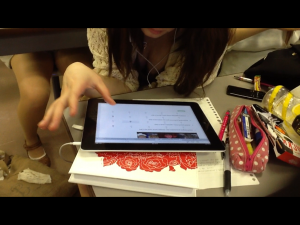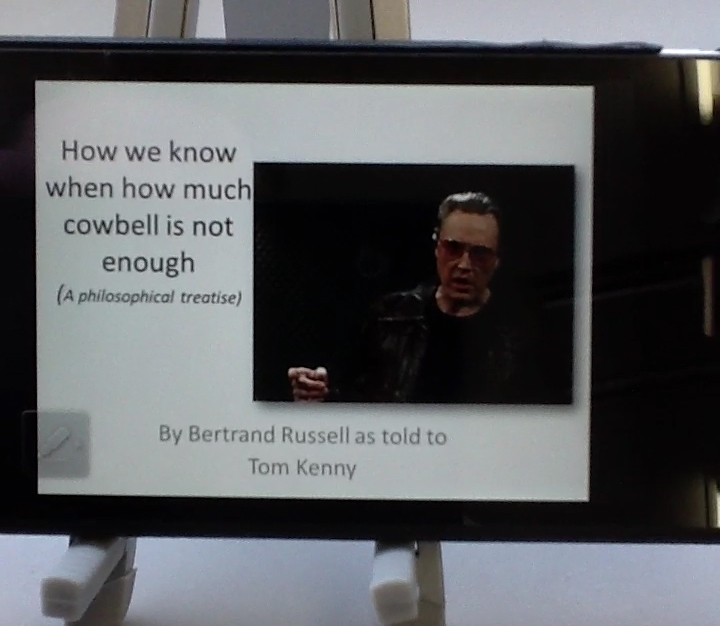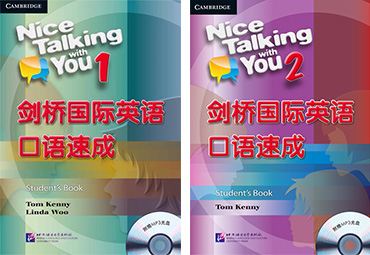Language students know the difference between canned, scripted audio and authentic listening material. When they first begin their ESL Listening Lives, they know the former is a necessary part of their learning, so they just hunker down and do it. Lucky for us teachers that they do. We can’t really demand more of them, given the activities we usually have to work with. Sure, we can assign a movie for them to watch outside of class, or a news clip to view online, but it’s clear to students that it’s supplementary material — it doesn’t exactly fit into what they’re doing in class. And yes, it helps improve their listening skills to listen, but it still amounts to catching language that comes from a script. It’s neat, it’s prepackaged and approved. It’s safe.
Bringing authentic material into the ESL classroom is risky. And yet, there’s something so fresh about the way authentic conversation sounds, students find it compelling to listen to. It’s very cool to see students in class kind of edge forward in their seats and consciously attend to what they hear. The novelty of hearing it produces novel behavior: genuine interest. Imagine that, in a classroom. Now imagine that it’s a part of your course material, and it meshes perfectly with the topic of the unit you’re teaching. That makes it all the more appealing for both teachers and students.
 It’s tricky to capture authentic spoken language. Most audio material for textbooks is recorded in big cities, in expensive studios, with professional voice actors and approved scripts. In contrast, I like to record people in relaxed settings, catch them when they’re talking naturally. I teach at Nagoya University of Foreign Studies, a place I view as an oasis of English, all kinds of English. Colleagues and friends are from the UK, Australia, India, Korea, Central America, China, Europe, Africa, and Southeast Asia, each with a unique voice, each with interesting things to say. I’m very grateful that they gave their time and shared their imagination with us on the Nice Talking with You project.
It’s tricky to capture authentic spoken language. Most audio material for textbooks is recorded in big cities, in expensive studios, with professional voice actors and approved scripts. In contrast, I like to record people in relaxed settings, catch them when they’re talking naturally. I teach at Nagoya University of Foreign Studies, a place I view as an oasis of English, all kinds of English. Colleagues and friends are from the UK, Australia, India, Korea, Central America, China, Europe, Africa, and Southeast Asia, each with a unique voice, each with interesting things to say. I’m very grateful that they gave their time and shared their imagination with us on the Nice Talking with You project.
I mentioned risk before. Teachers take a chance when they use authentic conversation in the classroom, but it’s publishers who take a much bigger risk by putting authentic language in text materials. The ELT publishing industry is rather conservative; when they produce textbooks, they have to remember that administrators and adoption boards do the safe thing, which is to choose books that are like the books they’ve chosen before. It’s been my great fortune to work with Cambridge University Press on developing activities based on the authentic conversation I’ve captured. True to the spirit of learning, Cambridge takes chances.
The video below shows a little slideshow around samples of the authentic language we recorded for the “Real Conversations” activities used in Nice Talking with You. I’d love to hear what you think of it, how you feel your students would react to this style of input, and what experience you’ve had with presenting authentic conversation to your students.








 I don’t know how many teachers in Mexico are using Nice Talking with You, but I’m thrilled that so many students took the time to check out the ESL materials available on the site! In fact, here’s something I made today just for our Mexican friends. Watch the video and listen. See the words in yellow? Stress those words when you repeat. It will be a nice way to get some English speaking practice. Enjoy!
I don’t know how many teachers in Mexico are using Nice Talking with You, but I’m thrilled that so many students took the time to check out the ESL materials available on the site! In fact, here’s something I made today just for our Mexican friends. Watch the video and listen. See the words in yellow? Stress those words when you repeat. It will be a nice way to get some English speaking practice. Enjoy!


